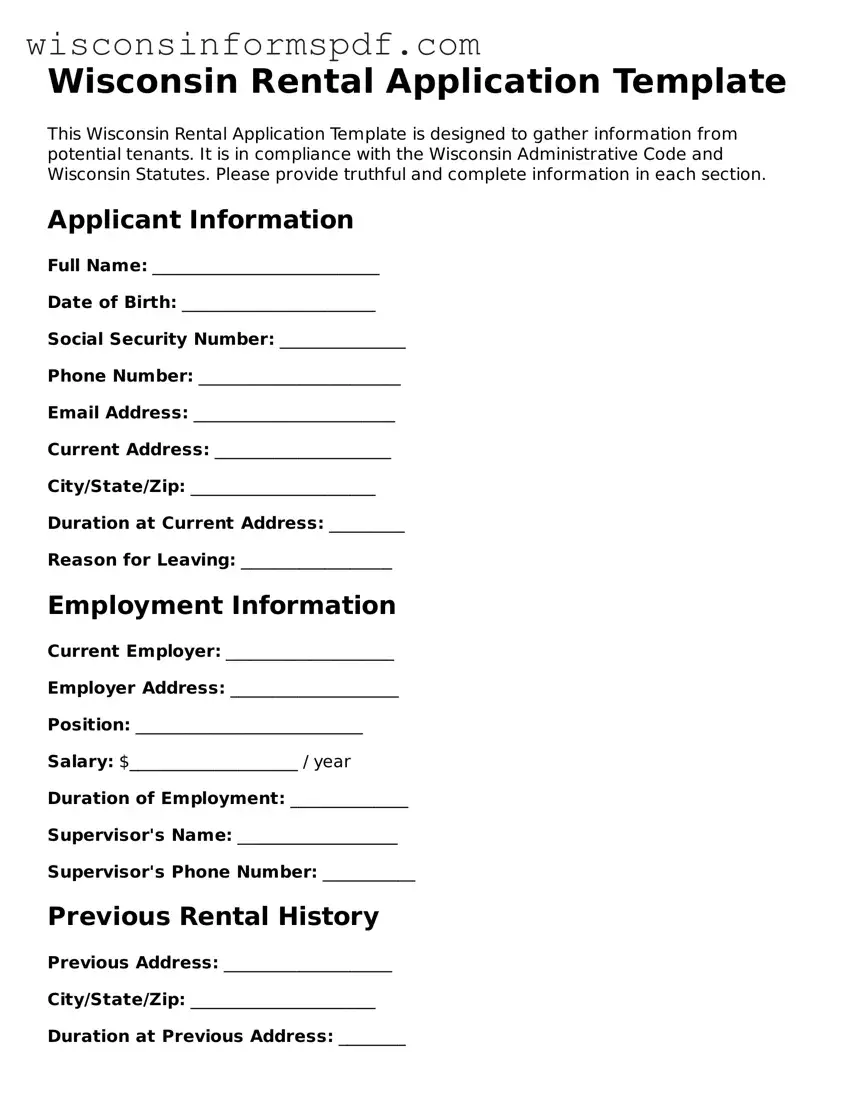Wisconsin Rental Application Template
This Wisconsin Rental Application Template is designed to gather information from potential tenants. It is in compliance with the Wisconsin Administrative Code and Wisconsin Statutes. Please provide truthful and complete information in each section.
Applicant Information
Full Name: ___________________________
Date of Birth: _______________________
Social Security Number: _______________
Phone Number: ________________________
Email Address: ________________________
Current Address: _____________________
City/State/Zip: ______________________
Duration at Current Address: _________
Reason for Leaving: __________________
Employment Information
Current Employer: ____________________
Employer Address: ____________________
Position: ___________________________
Salary: $____________________ / year
Duration of Employment: ______________
Supervisor's Name: ___________________
Supervisor's Phone Number: ___________
Previous Rental History
Previous Address: ____________________
City/State/Zip: ______________________
Duration at Previous Address: ________
Landlord's Name: _____________________
Landlord's Phone Number: ______________
Reason for Leaving: __________________
Additional Occupants
List anyone who will be living in the apartment other than yourself. Include each person's name and relationship to you.
- Name: ____________________ Relationship: _________
- Name: ____________________ Relationship: _________
- Name: ____________________ Relationship: _________
Other Information
Do you have pets? Yes ____ No ____
If yes, describe: ___________________________
Have you ever been evicted from a rental residence? Yes ____ No ____
If yes, provide details: _____________________
Have you ever been convicted of a felony? Yes ____ No ____
If yes, provide details: ______________________
Authorization
By signing below, I authorize the verification of the information provided on this form as to my credit, employment, and rental history. I understand that this is a preliminary application and not a lease agreement. I hereby declare that the information provided by me is true, accurate, and complete to the best of my knowledge.
Applicant's Signature: ________________________ Date: ____________
Office Use Only
Application Received By: ______________ Date: ____________
Application Fee: $______ Method of Payment: ______________
Remarks: ______________________________________________________
